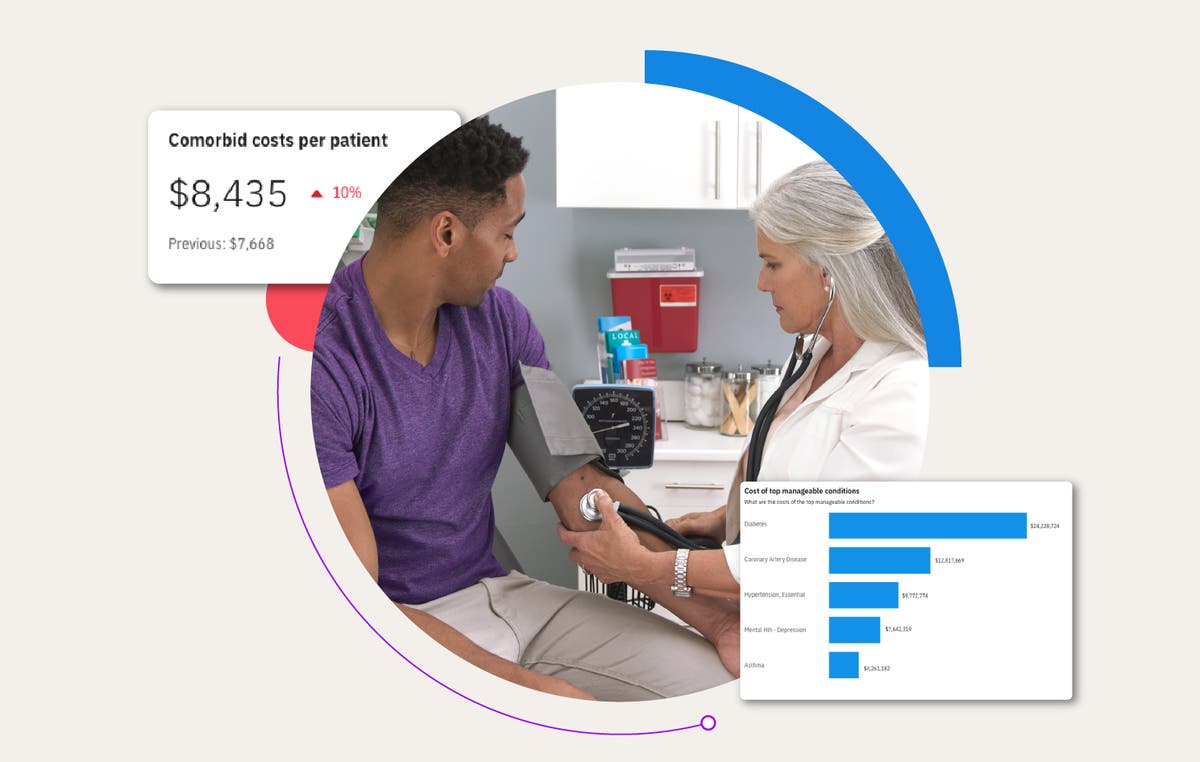How healthcare analytics help employers reduce costs and improve employee health

Year after year, employers grapple with rising healthcare costs that feel beyond their control. In the last year, more than 80% of benefit leaders have seen an increase in the overall cost of healthcare benefits and 66% had an increase in employee premiums.1 As 2025 approaches, healthcare cost increases show no sign of stopping, begging the question: “How can employers lower costs and improve employee health?”
Fortunately, in today’s data-driven world, we have a lot of the answers already, we just need to uncover them. That’s where healthcare analytics come in.
What are healthcare analytics?
Healthcare analytics are like a superpower that give benefits professionals unparalleled insight into hidden patterns and population health trends, and a data-driven view of how health benefits programs are impacting employee productivity, satisfaction, and costs. However, these insights are only as valuable as the data you put in.
When decision making directly impacts employee health, you can’t settle for data that is just “good enough.” While there are multiple data analytics vendors available, it’s important to note that data quality standards and accuracy vary significantly. Truven is the best in the industry at curating and enhancing healthcare data. You can trust that your informed decisions are based on the most accurate, reliable, and trustworthy information.
What can I do with healthcare analytics?
The possibilities are truly endless, but most employers focus on uncovering ROI for health programs and third-party point solutions, identifying effective interventions to reduce areas of high program cost, and benchmarking clinical and financial outcomes against their industry. Explore the top employer use cases and client success stories below:
Understand the impact of employee health on productivity, absenteeism, and overall business results, so you can devise benefits strategies to help employees be at their best while uncovering cost savings.
In the last year, at least 50% of employers have seen an increase in the costs associated with cancer and chronic condition care. 1 Healthcare analytics help pinpoint the primary drivers in overall benefits cost, such as high-cost conditions and frequent emergency room visits. Armed with that information, you can begin to brainstorm cost-effective strategies to address employees’ needs.
Employers are often surprised to find out what they’re spending on specialty medications, despite it being the leading cost driver across healthcare. The total impact can often be obscured, as some drugs are covered under medical benefits and others through the pharmacy plan, making management especially difficult. But with the insights from healthcare analytics, you can adjust to ensure the right specialty drugs – whether GLP-1s or biosimilars – are getting to the right people at the right time.
Develop a measurement strategy to assess the utilization of your benefits programs and to ensure that employees are getting the full impact of those benefits. Many employers offer health promotion initiatives through third-party vendors for conditions like diabetes management or musculoskeletal health. Healthcare analytics provide insights beyond engagement metrics by measuring actual changes in employee health behaviors, helping to evaluate program success and inform future plan design.
Customize benefits to meet the specific needs of your workforce, ensuring better healthcare utilization and employee satisfaction. Identify at-risk employees early for timely interventions and design targeted wellness programs for employees with chronic conditions, reducing the need for expensive treatments.
Understand the impact of demographics, environmental, and neighborhood factors on employee health. Improve health equity with data-driven benefits programs designed for what your organization wants and needs. This leads to increases in employee participation in wellness activities and better health outcomes. It can also give an employer the insights they need to create a culture of health - where purposeful, meaningful action is taken to ensure health and wellness across the organization.
See how your population stacks up against relevant cohorts. Compare your population cost, use, and prevalence of healthcare services and benchmark with cohorts across your industry, region, and more.
Conclusion
For more than 40 years, Truven has been a steady presence in the rolling sea that is healthcare. We’ve stayed ahead of the curve with first-in-the-market and time-tested solutions to support health and benefits program analysis, price transparency compliance, and benefits plan enrollment. Most recently, we introduced new enhancements to Health Insights, making it even easier to surface insights without needing to be an expert in data science.
Health Insights is purpose-built for busy benefits professionals who need the tools and support to make confident program decisions, faster. It includes configurable self-service dashboards and reports, convenient drill paths for deeper exploration, and guidance from the industry’s most experienced team of healthcare analytics advisors.
Want to learn more about how healthcare analytics can help your organization reduce costs and improve health? Chat with a Truven expert
Sources
-
Cuadra, Deanna. The State of Healthcare 2024. Employee Benefits News, April 8, 2024.
Related Articles

Insights to improve benefits offerings and spend for diabetes and behavioral health
Rising healthcare costs, provider network consolidation, and inflation have all...
By Chris DeStasio | 4 min. read

How healthcare analytics help organizations prioritize employee wellbeing
For over five years, DTE Energy has relied on data-driven decisions to keep...
By Merative | 4 min. read

Healthcare price transparency: What it means for members, employers, and health plans
In today’s digital world, consumers can shop for goods and services with just a few...
By Bryan Briegel | 5 min. read
Ready for a consultation?
Our team is ready to answer your questions. Let's make smarter health ecosystems, together.
